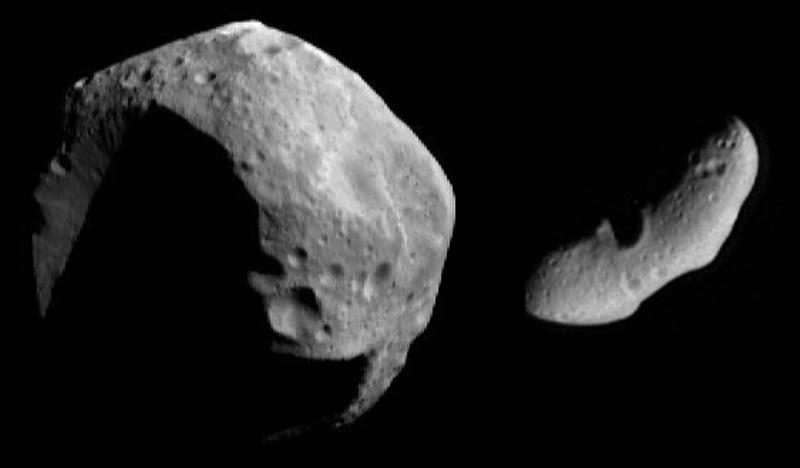
© NASA/JPL/JHUAPLImage of two different asteroids captured by NASA.
NASA has detected a total of seven asteroids headed for Earth in August. According to the agency's Center for Near Earth Object Studies (CNEOS), the biggest asteroid from the group is five times taller than the Statue of Liberty.
The first asteroid that will approach Earth is called
2019 ON. CNEOS noted that the space rock is about 180 feet long and is traveling at a speed of 10,400 miles per hour. It is expected to approach Earth on Aug. 1 at 11:23 am ST. During its approach, it will zip past Earth from a distance of 0.01729 astronomical units or roughly 1.6 million miles away.
Trailing behind 2019 ON is asteroid
2006 QQ23. According to CNEOS' data, this is the
biggest asteroid that will approach Earth next month. It has an estimated diameter of 1,870 feet and has a velocity of 10,400 miles per hour.
CNEOS estimated that 2006 QQ23 will fly past Earth on Aug. 10 at 7:23 am ST. It is expected to be about 0.04977 astronomical units or around 4.6 million miles away from the planet during its flyby.
The third asteroid that will visit Earth in August is
454094 2013 BZ45. This asteroid is about 820 feet long and is traveling at 18,250 miles per hour. It will enter Earth's neighborhood on Aug. 12 at 12:14 am ST. Its closest distance to Earth during its visit is expected to be at 0.04352 astronomical units or around 4 million miles away.

Comment: A few years ago NASA created a 'Planetary Defense Coordination Office' with a view to track meteors headed toward Earth, and "redirect" potentially dangerous asteroids as part of a long-term planetary defense goal.
However, asteroid 'redirection' or 'deflection' remains just theoretical. A more accurate way of looking at it is that NASA is funding deflection and redirection of the topic of space threats by 'getting the message out' that 'everything is just fine'.
See also: Expecting an asteroid? Proposed budget for NASA's Planetary Defense Coordination Office suddenly increased three-fold
As Fireball Numbers Increase it is well worth remembering what can come out of the sky, without any warning at all: